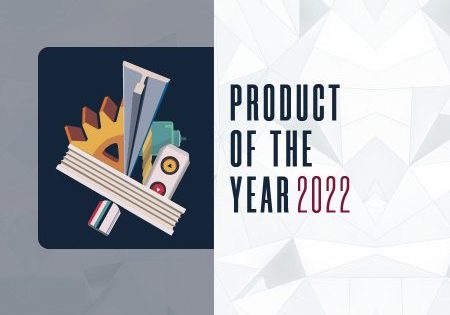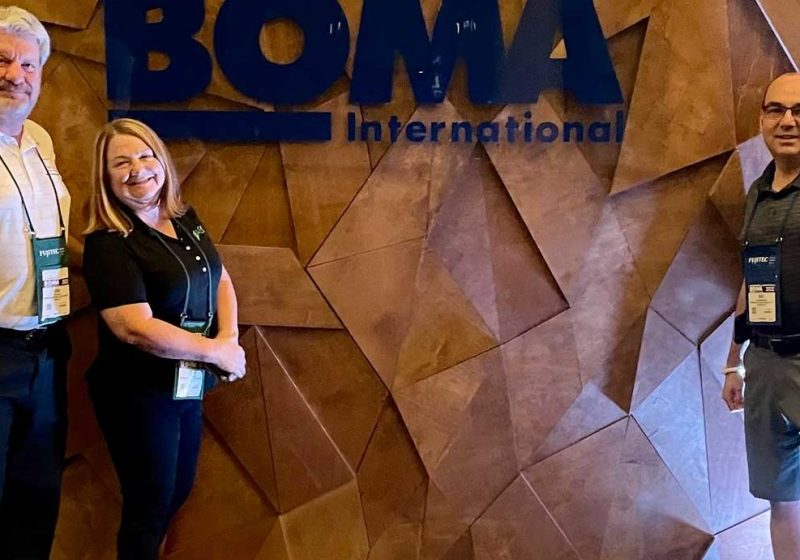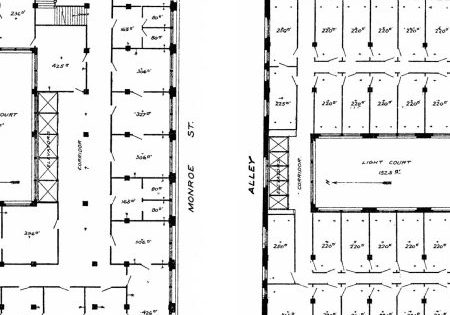RISE: The Untapped Potential of Women in the Elevator Industry
Sep 1, 2022

Part one of this four-part white paper explores the current state of the industry.
This white paper serves as a snapshot of the experiences of women who work in the elevator industry today, offering insight into the challenges women face and the important contributions they make in a wide range of roles and functions. It also provides an opportunity to consider what can be done — by businesses, industry bodies and individuals — to increase, encourage and empower diverse representation at all levels.
The aim is for this report is be a driver for collective change and progress in creating workplaces that are more inclusive, welcoming and safe for women and men of all ages and backgrounds.
The “Women in the Elevator Industry” Survey
In spring 2022, ELEVATOR WORLD carried out an online survey to its readership. It revealed a range of numbers and sentiments on the topic of women in the vertical-transportation (VT) industry. While it offers a limited window of information, we can make some general assumptions based on its findings.
Key Numbers
The survey attracted 93 respondents from a range of organizational sizes. Of these, only three respondents claimed they had no female employees, while 58% said they employ women in technical or field roles, such as mechanics, inspectors, helpers and apprentices. Ninety percent said women are represented in some level of leadership roles, such as manager, director, vice president, managing director or president.
For companies employing 100 people or fewer, the numbers paint a slightly different picture. Forty-five percent employ women in technical or field roles, and the percentage of companies with women in leadership is the same at 90%. However, the actual number of women in their workforce is lower, with 91% of companies saying women make up less than a 10th of their field workforce, and 98% saying women make up less than a 10th of leadership roles. So, while more of the smaller companies have female employees, women are in a more significant minority compared to larger organizations. Survey findings revealed:
- The average age of a female employee is 43, and 41% of women have more than 10 years’ industry experience.
- Thirteen percent of women have reportedly joined through apprenticeships or internships, 31% through family connections and 49% through traditional recruitment efforts.
- Sixty-seven percent of respondents said their number of female employees has increased in the last 10 years, and 69% said they plan to hire more women in the future.
Notable Comments
While some respondents actively run concentrated efforts to find women for specific areas in non-traditional roles, many report that, although they are open to hiring women for all positions, they recruit based on merit and morals, regardless of gender. Several respondents clarified that women are given the same opportunity to apply, with the same level of compensation on offer, but there simply aren’t very many female candidates coming forward.
Trade education is mentioned as a key element in terms of reaching women and other underrepresented groups earlier in their career journey by helping to generate an interest in the industry and an awareness of the opportunities available.
In terms of potential barriers to employing more women, many respondents discuss how perception of the industry is an important element. Some roles could be seen as too physically demanding, especially in construction and modernization, and candidates may not recognize the different areas in which they could get involved and where they would be perfectly capable to contribute.
Recommendations included reaching out to organizations like Women in Construction (WIC) or Non-Traditional Employment for Women (NEW) females in high school or college, particularly targeting young people ages 18-25 who are good with their hands and have the desire to enter a trade. Organizations like Helmets to Hardhats that help transition military service members into civilian careers also offer a good pool of potential industry candidates.
A number of respondents referenced the fact that the industry can seem unwelcoming to female candidates due to it being heavily male-dominated, and that organizations need to make more effort to empower their female employees and make them more visible as mentors, leaders and role models to break the stereotype.
Some respondents also pointed out that there is an element of unconscious bias when it comes to women in technical roles. As with all underrepresented groups, business leaders need to actively work toward becoming more inclusive to create a workplace where everyone feels comfortable and welcome. Several respondents highlighted the need for working toward a fairer workplace that offers good work and family balance, as well as creating strong principles, training and boundaries for disrespectful behavior, along with zero-tolerance policies on harassment.
Survey Summary
The main takeaway from this survey is that female representation in the industry is growing and expected to continue doing so, thanks to planned future efforts. We can also see there is a huge potential benefit for a business to tap into the experience and skills of the female workforce, but more efforts are required to capture people earlier in their career trajectory, making them aware of the opportunities to earn, learn and grow in the elevator industry.
Many agree that change needs to come from the top with organizations and unions focusing on hiring more women and under-represented groups. The industry needs to provide allies in positions of power who can help drive change and enforce the diversity that everyone will benefit from — businesses, individuals and society.
Industry Statistics
According to public demographics, 2% of elevator mechanics in the U.S. are women. The average age of an employed elevator mechanic is 46, with the most common ethnicity being White (72.3%), followed by Hispanic or Latino (16.8%) and Asian (4.2%). Five percent of all elevator mechanics identify as LGBTQ. In 2021, women earned 93% of what men earned in the industry.[1]
Lessons From Other Industries
Female labor force participation is proven to be an important driver of growth and development in any economy. In 2020, the share of women who participated in the labor force fell to 56.2%, the lowest rate since 1987, and nearly 4 percentage points below the peak of 60% in 1999. By comparison, the labor force participation rate for men was 67.7% in 2020.
Over the past several decades, women’s involvement in the labor market has changed, especially as women have become much more likely to pursue higher levels of education and to work full time. However, one key impact to employment rates is the baby boom generation entering retirement in large numbers, which has put downward pressure on the labor force participation rate of both men and women.[2]
Let’s take a look at how other industries are addressing the challenges of tapping into the potential presented by the female workforce.
Manufacturing
The manufacturing industry is often cited as one that has made great strides in its efforts to improve its gender balance, with an approximate 30% representation of women. According to the World Economic Forum, 33% of these are at junior level staff, 24% at mid-level staff, 15% at senior level staff and 9% are CEOs.[3]
The aim is for this report to be a driver for collective change and progress in creating workplaces that are more inclusive, welcoming and safe for women and men of all ages and backgrounds.
The need for more progress is recognized. In a 2022 research study, respondents said leadership/management training and mentorships have had the most significant impact on their career advancement. However, only 20% of manufacturing companies report that they offer leadership training, and only 13% offer mentorship programs. It’s also worth noting that STEM programs are by far the most effective pathway for women to enter the manufacturing industry, with 48% of women working in industrial careers identifying as having participated in one.[4]
IT
A report by Deloitte Global predicts that, on average, large technology firms will reach nearly 33% overall female representation in their workforces in 2022. This is a two-percentage point increase from 2019, which may not sound impressive, but does, in fact, represent notable progress. For smaller tech companies, the numbers are harder to map. Only a minority of businesses have established companywide hiring and promotion goals to increase diversity, and many don’t report on their diversity data.
It is recognized that the industry will need to continue to focus on recruiting, training, promoting and retaining women to improve these numbers as the industry grows.[5]
One key area for the technology industry to address is that of showcasing more female role models to inspire and encourage future generations to choose a career in IT. In the 2019 Women in Technology survey, the majority of respondents felt it was the responsibility of schools and educational institutions to address the imbalance of women in the industry by fueling a passion for technology at a young age. This was closely followed by respondents agreeing employers also hold a responsibility for inspiring a change. One way both schools and employers can do this is to present women with role models who have achieved the things they also aspire to achieve.[6]
Construction
According to WIC, women make up approximately 14% of industry professionals, a number expected to rise as more women enter construction and engineering jobs. In terms of on-site jobs, research from the Smith Institute suggests the female workforce could be as low as 1.4%.
One of the biggest challenges for women in the construction industry is it is still a highly male-dominated environment, where women can struggle to earn the respect of male co-workers. Achieving greater pay equality is another significant challenge, as it is for women in many professions.[7],[8]
Women need to be given the equal chance to either succeed or fail, without the assumption that they can’t do something. — Amy Blankenbiller, NEII executive director
Trucking
There are 3 million truck drivers in America, out of which 10% are women. Although this number is still low, the industry has seen a spike in interest from women in recent years. This is caused in part by women seeing truck driving as a path to becoming their own boss. Other factors include good earning potential, a work environment where merits speak louder than appearance and the opportunity to take on a challenge in a non-traditional role.
While there are barriers to gender diversity in the trucking industry, these are being discussed and actively addressed through several initiatives to help improve diversity across the board. These include targeted recruitment campaigns, adapting the layout and design of trucks to allow for a smaller physique, “team driving” programs that help reduce potential safety risks for women driving alone and facilitating the ongoing training and mentoring of women truckers.[9]
NAEC and Women in Motion
Since its inception 73 years ago, the National Association of Elevator Contractors (NAEC) has had a total of 15 women serve on its board. It has had two female presidents: Lien Randle (2001-02) and Hope Evans (2021-22). In addition, three treasurers, five secretaries and three executive directors have also been female.

Rená Cozart joined NAEC as executive director in 2020. Early on, she was made aware of the VIEEW (Vertical Initiative for Elevator Escalator Women), a group founded by the late Martha Hulgan of MMH & Associates and Ricia Hendrick of ELEVATOR WORLD. This was a networking community that had great impact in terms of supporting women and highlighting their value to the industry. At the request of several women owner/operators, Cozart worked with volunteer leaders to revive the program in the form of Women in Motion, a program now driven by NAEC volunteer leaders. Cozart facilitates the group on behalf of NAEC members with the mission to continue the important work of building better opportunities for women in the industry. Cozart said:
“Our industry has an obvious need to recruit talent. We need people who are trainable, consistent and trustworthy — qualities found in both men and women from all backgrounds. By being more intentional in targeting women, we can significantly increase the talent pool to meet the industry’s recruitment needs.”
The balance between strong men and women leading the organization has been important in NAEC’s continued growth and success. Cozart considers herself fortunate to be involved with NAEC at a time when there are three women on the board of directors, a female supplier chair and female organization president. And while that is unusual, her aim is to consistently help create equal opportunities for women in NAEC roles. The organization’s mission is to “innovate and provide opportunity in the industry.” With labor being a key challenge facing so many of its members, Cozart wants to play a part in creating a strong workforce that pulls in talent from the entire population.
For Cozart, diversity plays across other factors as well, including geography, ethnicity and age. She’s already seeing progress in the work done by the NAEC’s NexGen initiative and believes it will play a critical part in helping to fill the talent gap, where women represent just one of the untapped categories of potential, along with many minority groups that are not being addressed fully today. Her ambition is to build on this progress with the Women in Motion program and help seed the ground and cultivate the opportunity for a new generation of elevator professionals. “I’m optimistic about the future,” Cozart said, continuing:
“NexGen already has 30% female members, which is an exciting indicator, and we’re seeing great interest in what Women in Motion is doing. Our responsibility now is to make sure we are relevant and add value. By providing mentors, a voice and a platform for asking questions that they may otherwise not feel comfortable asking, we can help nurture the leaders of tomorrow. It is not a matter of wanting to focus on diversity for the VT industry, it will be a necessity to ensure the continued growth and success of NAEC member companies and the industry as a whole.”
NEII Bringing Together Diversity and Safety

National Elevator Industry, Inc. (NEII) is the premier national trade association for the elevator and escalator industry. The organization’s most prominent objective is to promote a high level of safety for industry professionals, and this occasionally leads to conversations around access to relevant safety solutions for all body types. “We’re not all built the same,” said Amy Blankenbiller, executive director of NEII, adding:
“Whatever our gender, all people have very different physical builds. A common challenge occurs when female technicians are provided safety equipment that is designed with the typical male figure in mind, but challenges in properly fitting personal protective equipment (PPE) are of course widely varied.”
Blankenbiller references conversations with female field workers unable to comfortably wear a traditional safety harness due to the location of the chest strap. Many have also experienced a lack of suitable sizes and fit for gloves and hardhats. Uniforms or other clothing options can also be ill-fitting and uncomfortable. According to Blankenbiller:
“When I speak to safety directors, they appreciate getting this feedback from the field so they can address requests to improve safety equipment. I’m delighted to see that today all the major OEMs provide inclusive PPE solutions. They all offer harnesses with adjustable straps, improved options for uniforms and an extended size range for equipment like gloves and hardhats. What’s more, they regard this not only as a safety issue but also a staff retention issue and rightly so.”
While this is indeed a step in the right direction, Blankenbiller wants to continue to forge ahead by challenging all NEII members, as well as the entire construction industry, to discuss the issues and their solutions, and take advice from those who are successfully making the workplace more inclusive for all. “We have to take incremental, meaningful steps towards change,” she said, continuing:
“People don’t always intend to discriminate or exclude women, and there is sometimes a misdirected willingness to help, but we need to be conscious of how that help could be reinforcing stereotypes that prevent women from being seen as capable of doing the job. Women need to be given the equal chance to either succeed or fail, without the assumption that they can’t do something.”
Blankenbiller referenced a conversation she had with a female mechanic whose colleague wouldn’t allow her to carry the ropes for a cable repair. While the male mechanic wasn’t intending to discriminate, Blankenbiller said he should have given the woman the chance to carry the ropes:
“We all understand this reasoning, but we can’t excuse the behavior just because it sometimes comes from a good place. We need to work on culture and attitudes that help us all recognize what is helpful and what is harmful, because whatever someone’s intention is, actions like these remove the opportunity for women to learn the same way another person would learn.”
Blankenbiller would like to see a change in how discriminatory or derogatory behavior is addressed in the workplace, including how colleagues highlight it to each other. “If you see something, say something,” she said, adding:
“Peer-to-peer engagement is needed to reinforce the messages coming from company leadership. So, if anyone sees someone on a jobsite giving a minority or a woman a hard time, everyone shares the responsibility to question that behavior.”
References
[1] https://www.zippia.com/elevator-mechanic-jobs/demographics/
[2] https://www.bls.gov/opub/reports/womens-databook/2021/home.htm
[3] https://worldmanufacturing.org/women-in-manufacturing
[4] https://www.globenewswire.com/news-release/2022/02/23/2390596/0/en/Nearly-75-Of-Women-in-Manufacturing-Recommend-A-Career-In-The-Industry-A-New-Study-From-Xometry-Women-in-Manufacturing-Finds.html
[5] https://www2.deloitte.com/us/en/insights/industry/technology/technology-media-and-telecom-predictions/2022/statistics-show-women-in-technology-are-facing-new-headwinds.html
[6] https://www.womenintech.co.uk/8-facts-women-tech-industry
[7] https://www.goconstruct.org/why-choose-construction/diversity-in-construction/women-in-construction
[8] https://www.smith-institute.org.uk/book/building-the-future-women-in-construction/
[9] https://migway.com/blog/how-female-truck-drivers-are-changing-the-trucking-industry/
Get more of Elevator World. Sign up for our free e-newsletter.









